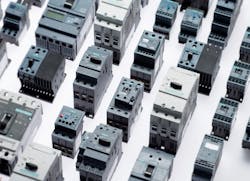Startup Pushes the Use of Virtualization in Edge Devices
Embedded development is far more complicated today than it once was. There are countless lines of legacy code in cars, factories and other systems that have to be safeguarded while other applications based on artificial intelligence have to be developed over time so that they can harness the huge amount of data around them. That has led to the use of containers, hypervisors and other technologies used in the cloud computing industry.
"Building, deploying and running apps at the edge should just as easy and secure as it is for the cloud today," said Said Ouissal, the chief executive of the startup Zededa. The company, which last week raised $16 million in funding led by venture capital firms Energize Ventures and Lux Capital, is the latest to champion the use of the cloud computing playbook in the embedded industry. The funding brings its total raised to $20 million since it was founded in 2016.
As the industrial Internet of Things grows, embedded systems are going to have to process data closer and closer to where it was created. An autonomous car, for example, will need to figure out in a fraction of a second how to prevent a collision with another car or pedestrian. Consulting the cloud could take too long. And then there is the persistent threat of the cloud going offline. That could undermine the reliability and safety of all sorts of critical infrastructure.
Zededa's technology is designed to deploy any application over any cloud in any device located at the network edge, the company claims. With it, customers can drop applications into different types of devices from different manufacturers. Zededa is also building out cloud infrastructure for companies using its tools, which are based on open standards. The company's cloud can be used to manage all the applications using its EVx edge virtualization software.
Other companies are getting in on the game. Wind River's latest tool, the Helix Virtualization Platform, allows airplanes, cars and factory equipment to run legacy code on top of a real-time operating system while more advanced applications based on an open source operating system like Linux can be upgraded over time. Cloud computing vendors including Google and Microsoft have started to sell services for managing millions of Internet of Things devices.
Zededa's technology is based on the unikernal, a modular morsel of code that contains an application and the operating system required to run it—and nothing else. These parcels of software are even simpler than traditional containers used in cloud computing, which consolidate all the code and tools needed to run an application. That allows them to fit inside an even broader range of embedded computing environments from factory equipment to industrial drones.
The company also uses hypervisors, which allow electronic devices to run more than one operating system at the same time without interfering with each other. For instance, the Windows-based control panel of a machine tool can be isolated from a program using a real-time operating system that controls the machine's movement. Another program based on the Linux could be used to make sure that the parts are being manufactured like they are supposed to.
About the Author
James Morra
Senior Editor
James Morra is the senior editor for Electronic Design, covering the semiconductor industry and new technology trends, with a focus on power electronics and power management. He also reports on the business behind electrical engineering, including the electronics supply chain. He joined Electronic Design in 2015 and is based in Chicago, Illinois.

